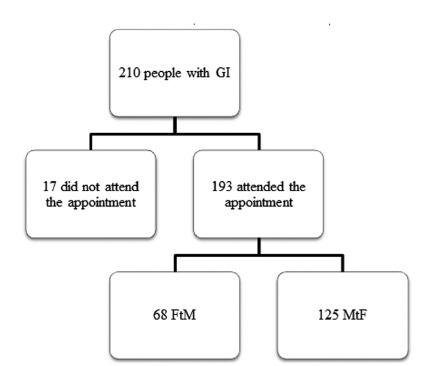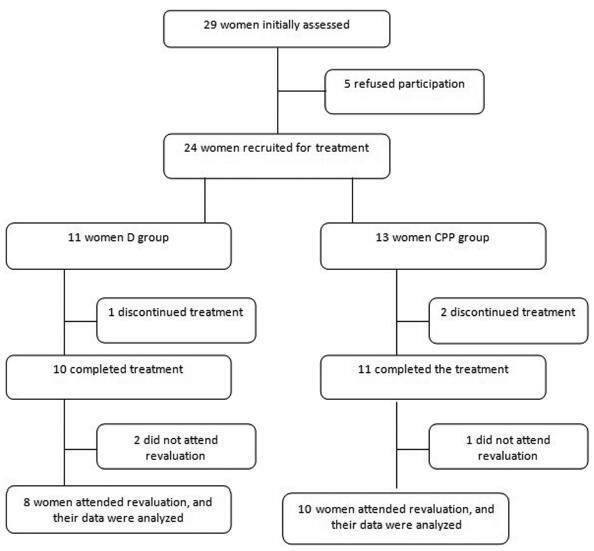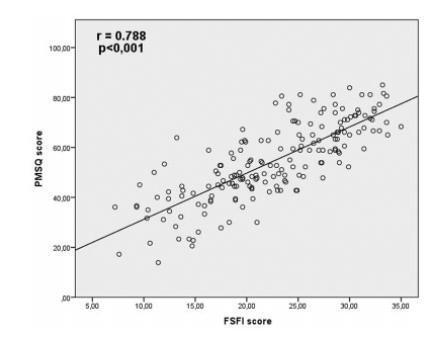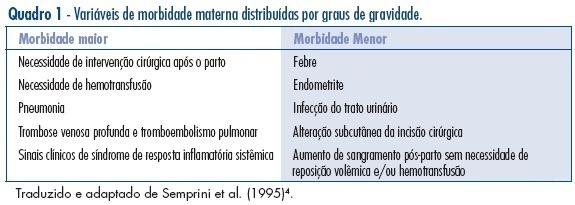Summary
Revista Brasileira de Ginecologia e Obstetrícia. 2022;44(3):258-263
To identify the age when individuals first perceive gender incongruence (GI) and to compare sociodemographic data of female-to-male (FtM) and male-tofemale (MtF) transgender individuals assisted at an outpatient service.
The present cross-sectional study was conducted through a review of the medical records of individuals diagnosed with GI at a single specialized outpatient service in the city of Ribeirão Preto, state of São Paulo, Brazil.
A total of 193 medical records from 2010 to 2018 were evaluated, and 109 (56.5%) patients had GI since childhood. The FtM transgender individuals perceived GI in childhood more often than the MtF transgender individuals (odds ratio [OR]: 2.06, 95% confidence interval [95%CI]: 1.11-3.81) Unattended hormone use was highest among the MtF group (69.6% versus 32.3%; OR: 4.78, 95%CI: 2.53-9.03). All of the individuals who were engaged in prostitution or were diagnosed with a sexuallytransmitted infection, including HIV, were in the MtF group.
Despite the more prevalent perception of GI in childhood among the FtM group, social issues were more prevalent among the MtF group, which may be the result of social marginalization.

Summary
Revista Brasileira de Ginecologia e Obstetrícia. 2014;36(6):259-263
DOI 10.1590/S0100-720320140004812
To analyze the factors related to route of delivery in patients with pre-eclampsia.
A retrospective analytical study was conducted from January 2009 to January 2011, during which 250 medical records of patients diagnosed with pre-eclampsia who gave birth to live fetuses with a gestational age of 28 weeks or more were selected. The variables evaluated were: maternal age (19 years, 20−34 years and over 35 full years), gestational age at delivery (28−37 weeks and more than 37 weeks), parity (primiparous or multiparous), previous cesarean section, history of pre-eclampsia or chronic hypertension, current diagnosis of mild or severe pre-eclampsia, and birth weight of the newborn. The information was transcribed to a questionnaire based on the variables being investigated. The chi-square test was applied to identify the relationship between the variables, with the level of significance set at p<0.05, and the Odds Ratio (OR) was calculated only for the variables showing a statistically significant difference in order to determine the odds for the patient to be submitted to a cesarean section.
In this study, we observed a 78.4% rate of cesarean delivery, with 54.1% of the patients submitted to the procedure having a gestational age of 28 to 37 weeks (OR=3.1; p<0.01). Patients with a history of pre-eclampsia were 2.5 times more likely to have cesarean delivery (OR=2.5; p<0.02). All patients who had had a previous cesarean were submitted to cesarean delivery in the current pregnancy (p<0.01). Pregnant women with severe pre-eclampsia were 3.3 times more likely to progress to cesarean delivery than those with mild pre-eclampsia (OR=3.3; p<0.01).
After individual analysis, only gestational age and a diagnosis of severe pre-eclampsia showed significant differences, representing risk factors for this type of delivery.
Summary
Revista Brasileira de Ginecologia e Obstetrícia. 2012;34(6):259-267
DOI 10.1590/S0100-72032012000600004
PURPOSE: To compare the filling out of the prenatal care card of pregnant women at a school-service and other services, as well as to verify the concordance between these records and verbal information provided by the puerperae. METHODS: A two-stage epidemiological, cross-sectional study was performed with stratified sampling, proportional to number of births. In the first stage, the information recorded on the prenatal care card in the school-service was compared to that recorded in units not linked to higher health education in Recife (PE). In the second stage, the information about prenatal care was collected with a semi-structured questionnaire applied to women during the puerperal period. A total of 262 puerperae older than 19 years, who had a prenatal care card at the time of delivery were included in the study from May to July 2008. Data were analyzed statistically by the χ² test, Student´s t-test or Mann-Whitney test, all one-sided to the right, with the level of significance set at 5%. RESULTS: The information more often recorded on the prenatal care card in the school-service was: schooling (86.5 versus 70.3%; p=0.002), marital status, (83.7 versus 70.9%; p=0.01), weight prior to pregnancy (72.1 versus 46.8%; p<0.001), height (62.5 versus 45.6%; p=0.007), and educational practices (76.9 versus 11.4%; p<0.001) and, at other services, only birth weight <2,500 g (15.4 versus 27.2% at the school-service; p=0.02). There were significant discrepancies between data obtained by verbal information and the prenatal care records of the pregnant women. At the school-service, 40.3% of pregnant women received adequate prenatal care versus 20.3% at other units. CONCLUSIONS: In all services, there was a predominance of recorded information directly related to delivery, while information about actions with preventive characteristics during prenatal care was neglected.
Summary
Revista Brasileira de Ginecologia e Obstetrícia. 2018;40(1):26-31
A vulvar squamous intraepithelial lesion is deemed to be a preceding lesion to vulvar cancer, especially in women aged under 40 years, holders of an acquired or idiopathic immunosuppression. Several treatments have been used to treat these lesions. One of the aesthetically acceptable therapeutic methods is the CO2 laser vaporization.
In a transversal study, 46 records of immunosuppressed women bearing a vulvar low grade and/or high grade squamous intraepithelial lesion were selected out of the retrospective analysis, computing age, date of record, date of vulvar lesion treatment with CO2 laser, the time elapsed between the first and the last visit (in months), the number of visits, the presence or absence of condylomatous lesions in other female lower genital tract sites and whether or not recurrences and persistence of intraepithelial lesions have been noticed during the follow-up.
Patients bearing vulvar high-grade squamous intraepithelial lesion and immunosuppressed (serumpositive forhumanimmunodeficiency virus [HIV] or with solid organs transplantation) have shown a higher level of persistence of lesions and a higher chance of having other areas of the female lower genital tract involved.
While the CO2 laser vaporization is the most conservative method for the treatment of vulvar high-grade intraepithelial lesions, it is far frombeing the ideal method, dueto the intrinsic infection features considered. The possibility of persistence, recurrences and spontaneous limited regression indicates that a closer surveillance in the long-term treated cases should be considered, in special for immunosuppressed patients.
Summary
Revista Brasileira de Ginecologia e Obstetrícia. 2017;39(1):26-30
To evaluate the long-term effectiveness of perineal Thiele massage in the treatment of women with dyspareunia caused by tenderness of the pelvic floor muscles.
A total of 18 women with diagnoses of dyspareunia caused by tenderness of the pelvic floor muscles were included in the study. The women were divided in two groups: the dyspareunia (D) group - 8 women with dyspareunia caused by tenderness of the pelvic floor muscles; and the chronic pelvic pain group (CPP) group - 10 women with dyspareunia caused by tenderness of the pelvic floor muscles associated with CPP. Each patient filled out the Visual Analogue Scale (VAS), the McGill Pain Index, the Female Sexual Function Index (FSFI) and the Hospital Anxiety and Depression Scale (HADS). After an evaluation, the women underwent transvaginal massage using the Thiele technique over a period of 5 minutes, once a week for 4 weeks.
All women had significant improvements in their dyspareunia according the VAS and the McGill Pain Index (p < 0,001), but the HADS scores did not show significant differences. Regarding sexual function, the D group showed improvements on all aspects of sexual function, while the CPP group showed differences only in the pain domain.
Thiele massage is effective in the treatment of dyspareunia caused by tenderness of the pelvic floor muscles with a long-term pain relief.

Summary
Revista Brasileira de Ginecologia e Obstetrícia. 2010;32(1):26-32
DOI 10.1590/S0100-72032010000100005
PURPOSE: to compare the pain reported by patients submitted to hysteroscopy by the standard technique with carbon dioxide (CO2) and to vaginal hysteroscopy with physiological saline (0.9% NaCl). METHODS: this was a prospective cohort study conducted at an ambulatory hysteroscopy service. A total of 117 patients with indication for the exam were included, being randomly assigned to one of the groups. All patients answered an epidemiological questionnaire and scored the pain expected before the exam and that felt after the end of the procedure on a verbal pain scale from 0 to 10. A speculum, traction of the cervix, insertion of a 30º light source and a diagnostic shirt with a total diameter of 5 mm were used for the standard technique. The cavity was distended with CO2 under a pressure of 100 mmHg controlled with a hysteroflator, and a biopsy was obtained with a Novak curette. Vaginoscopy was performed without a touch by distention of the vagina with fluid, direct visualization of the cervix and introduction of the light source with two continuous-flow shirts, with an accessory channel with an oval profile, the whole set measuring 5 mm in diameter. The medium distention was 0.9% NaCl and the pressure used was that considered to be necessary for an adequate visualization of the canal and of the cavity with an external pneumatic pressurizer. The biopsy was obtained in a directed manner using an endoscopic clamp. The mean and standard deviation were calculated for the quantitative variables and the frequency was calculated for the qualitative variables. The Student's t-test was used to compare the means, and the chi-square or exact Fisher test was used (when n<5) for the categorical analysis using the SPSS 15.0 software. The study was designed for a 95% test power, with the level of significance set at p<0.05. RESULTS: the groups were similar regarding age, parity, previous uterine surgeries, menopausal status, and the need for a biopsy. In comparison to the group submitted to the standard technique, the vaginoscopy group involved a lower technical difficulty (5.1 versus 17.2%, p=0.03), a higher rate of exams considered to be satisfactory (98.3 versus 89.7%, p=0.04) and a lower pain index (4.8 versus 6.1; p=0.01), as the difference were more evident when patients who never had a previous normal delivery were compared (4.9 versus 7.1; p=0.0001). When the pain scale was stratified as mild (0-4), moderate (5-7) or intense (8-10), the vaginoscopy technique was found to be associated with a 52% reduction of the frequency of intense pain (p=0.005). CONCLUSIONS: vaginohysteroscopy was proved to be a less painful procedure than the technique based on the use of a speculum and CO2, regardless of age, menopause or parity, with more satisfactory results and lower technical difficulty.
Summary
Revista Brasileira de Ginecologia e Obstetrícia. 2020;42(1):26-34
To assess the construct and criterion validity of the Postmenopause Sexuality Questionnaire (PMSQ).
The present methodological questionnaire validation study included postmenopausal women. The construct validity was tested by factor analysis and the criterion validity was performed using the correlation between the PMSQ and the Female Sexual Function Index (FSFI). The ROC curve was used to verify sensitivity, specificity and to determine the cutoff point of the PMSQ.
A total of 181 women with amean age of 56.4 ± 5.7 years old were evaluated. The exploratory factor analysis showed that the PMSQ presented Kaiser test = 0.88 and χ2 = 3293.7 (p < 0.001), commonalities ≥ 0.5, and extraction of 9 factors with eigenvalue ≥ 1; explaining 66.3% of the total variance. The PMSQ presented factor loadings between 0.4 and 0.8. A strong correlation between the 2 questionnaires (r = 0.79; p = 0.000) was shown. The cutoff point of the PMSQ was ≤ 55.5, assuming 87.9% sensitivity and 78.9% specificity (p < 0.001).
Since the PMSQ showed a strong correlation with the FSFI questionnaire, it presented good psychometric properties to assess the sexuality in postmenopausal women. Based on these results, the PMSQ could be widely tested as a specific instrument to examine the sexual function in postmenopausal women. Future studies, designed to examine the PMSQ instrument in different populations, are needed.

Summary
Revista Brasileira de Ginecologia e Obstetrícia. 2007;29(5):260-266
DOI 10.1590/S0100-72032007000500007
PURPOSE: to evaluate puerperal morbidity in HIV-infected and HIV non-infected puerperal women. METHODS: longitudinal and controlled study performed from July 2001 to September 2003, in 205 pregnant women admitted for birth delivery at Odete Valadares Maternity, divided in two groups: HIV-infected women (82) and HIV non-infected women (123). Postpartum morbidity evaluation was performed from birth delivery up to 15 days postpartum. Morbidity was categorized as minor (postpartum hemorrhage, fever and endometritis) or major (blood transfusion, deep alterations of the surgical wound and indication for surgical intervention), and was evaluated both according to the presence or absence of HIV infection and the mode of delivery. Continuous variables were analyzed by the Student’s t-test, and categorical variables were analyzed by chi2 and Fisher’s exact test using Epi-Info 2000 (CDC, Atlanta). RESULTS: puerperal morbidity was observed in 18 patients from the HIV group (22%) and in 17 patients from the control group (14%) with predominance of minor morbidity, without statistical significance, except for an increased risk of endometritis in the HIV group (RR=1.05; CI 95%:1.01-1.10). No significant difference was observed concerning the mode of delivery between the two groups. There were only two major morbidities: blood transfusion and necrotizing fasciitis. CONCLUSIONS: HIV-infected and non-infected puerperal women have a similar morbidity, despite the lower morbidity in the HIV non-infected group and the increased risk of endometritis in the HIV group. Clinical puerperium follow-up is a strategic control tool for an early identification of maternal morbidity.
